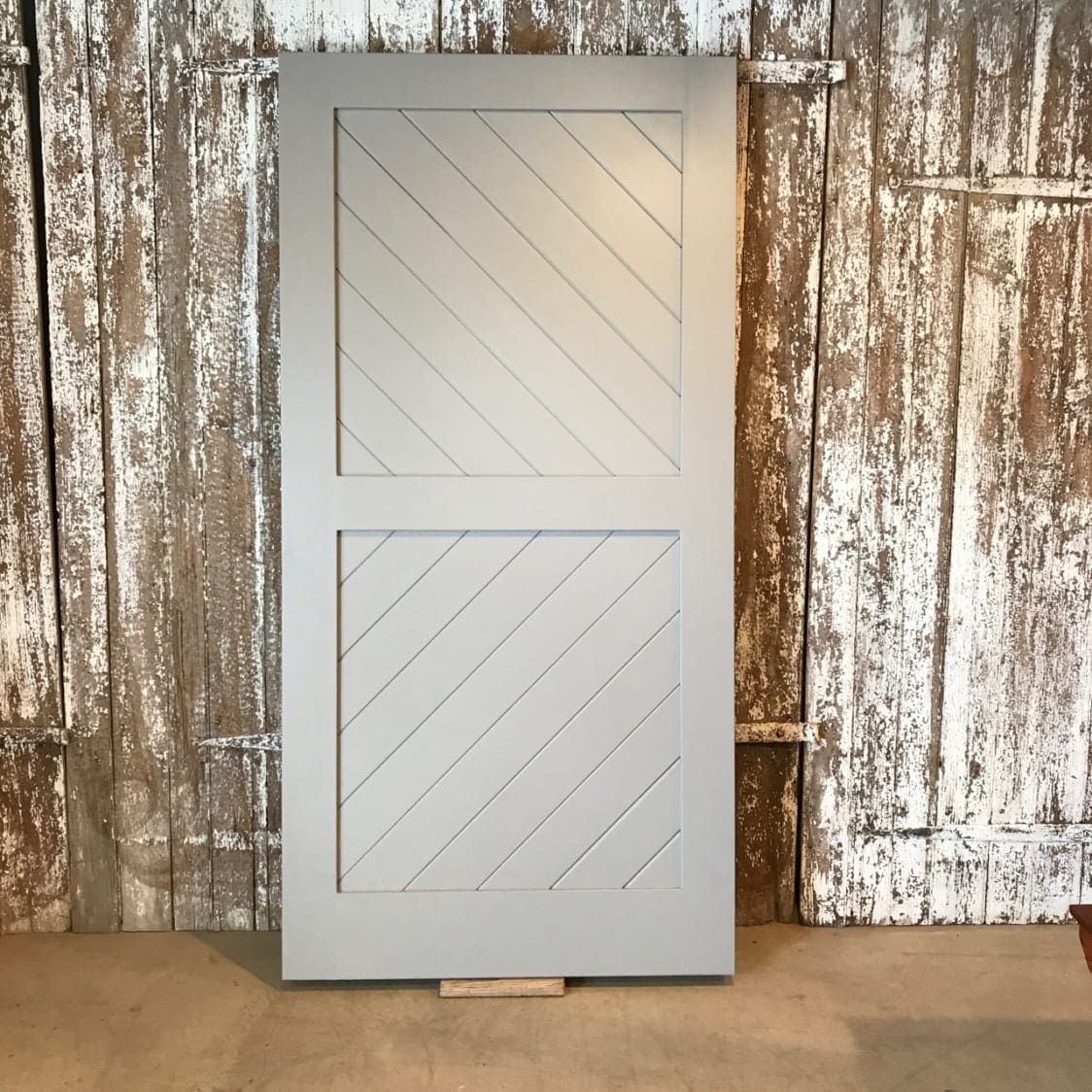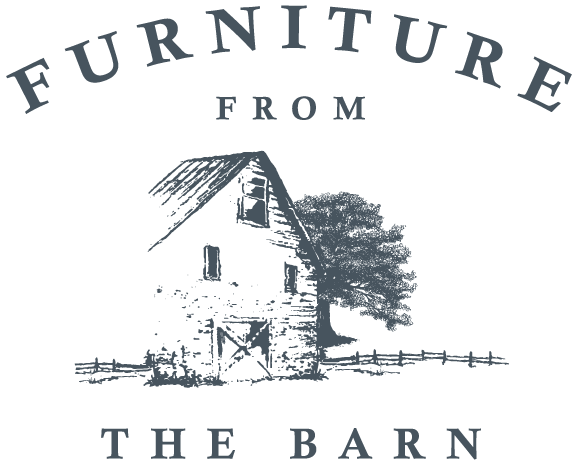Barn doors are hugely popular right now. Interest in barn doors (including entertainment centers with sliding barn doors covering the cabinets) has only increased among our customers.
Let’s talk about the most important things you need to know if you’re thinking about having a barn door custom-made to slide across an entranceway or closet opening inside your home.
You don’t need to live in a converted barn or farmhouse-styled home in order to enjoy interior barn doors. One thing customers love about the barn doors we craft is how the mix of different kinds of wood and metal hardware — including pulls and hangers — look so good together.
A sliding barn door can be a space saver if the opening it covers doesn’t allow for the radial space needed by a standard swing-open door. On the other hand, a certain amount of wall space is needed to allow for a barn door to fully slide open and closed across the opening.
Barn doors are often a good solution for other “space issues” too. For example, many traditional homes contain single rooms downstairs used as offices or dining rooms. Very often, a swing-out door just doesn’t look right in these entranceways. A barn door, however, might be a perfect fit for such an area in many homes.
Another favorite place to use a barn door is for the separation of a master bathroom from the master bathroom. This is often done in an older home but can also be planned for in a home being newly constructed. Currently, the most popular use of barn doors in our customers’ homes is probably where they’re being added to separate the kitchen area from an adjacent “mud room”. 
Eyebrow Arch Barn Doors
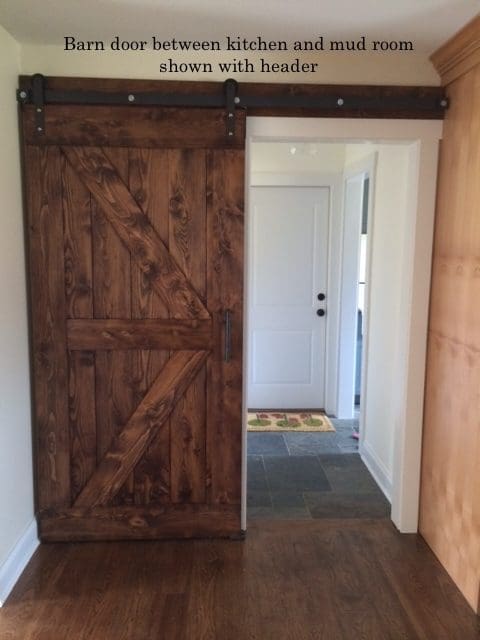
Barn Door Entertainment Cabinets are Now Also Trendy
Although we can’t be sure, I’m guessing our team here at FFTB may have unwittingly helped start another trend among barn door enthusiasts – that of combining barn doors with entertainment cabinets. We often build entertainment centers up to 12 feet in length (they sometimes hold TVs as much as 70-inches wide). Sliding barn style doors look great on the cabinets.
We’re now building a lot of barn doors with these custom-made entertainment centers for many customers. It’s just another way one can add a certain rustic, farmhouse look-and-feel to their home nowadays.

To see if an interior barn door solution will nicely cover any entranceway or closet, you want to know …
What type of “Look” You Want?
Are you looking for a truly rustic-looking door? Or do you want a more traditional look … or perhaps even something more contemporary? Would you like the wood stained or painted? A home that is more traditional-looking is much more likely to be fitted with interior doors that are somewhat more refined. While a farm house would be a perfect place to display barn doors that are more rustic in character.
Can a barn door be fitted with glass panes? Yes, this is now something we’re now regularly doing for customers. It’s a great option if you’d like a barn door that allows light to come in through it from one room to the next. (The panes in these doors are tempered glass.)

What is the Size of the Opening the Barn Door will Cover?
If you’re interested in having us build a barn door for you then the first thing you need to know is, “How big is the opening … and does this opening have molding around it?”
We need to know the answers to these questions in order to determine how wide the door will be. The actual width of the barn door will need to be a little wider than the width of the opening itself PLUS any molding that exists on either side of the opening. This means a barn door’s full width will require a certain number of additional inches in order to completely cover an opening with molding.
If an opening doesn’t have any molding around it then the barn door may only need to be a couple of extra inches wider (on each side) than the opening it’s covering. But if the opening features some type of molding then the door will need to cover the width of the opening PLUS the molding on the sides.
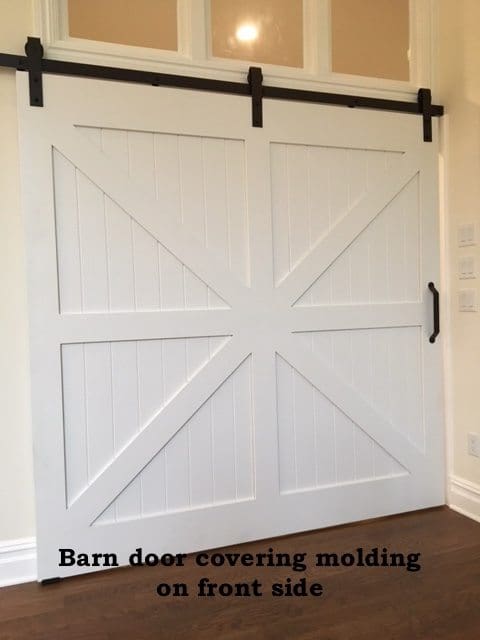
Does the Opening Have a Header (or Studs) Overhead?
This is important for you (and us) to know because hardware will be attached across the top of the opening that will fit with hardware on top of the door (enabling the door to slide across the opening.) If above the opening it doesn’t have either a header or studs which is required to bolt the track into then we’ll need to build a custom “header” piece of wood (typically a beautiful piece of wood made from the same exact wood as your door) that will securely hold the door’s overhead track in place.
Such a custom header is often 6 to 8 inches high. Its length, however, needs to be the entire length of the door track. Let’s say, for example, the barn door is 40 inches wide. The track for this door would be 80 inches in order to allow the door to completely slide open and closed across the opening. So, the header we build to securely hold this track in place would also be 80 inches.
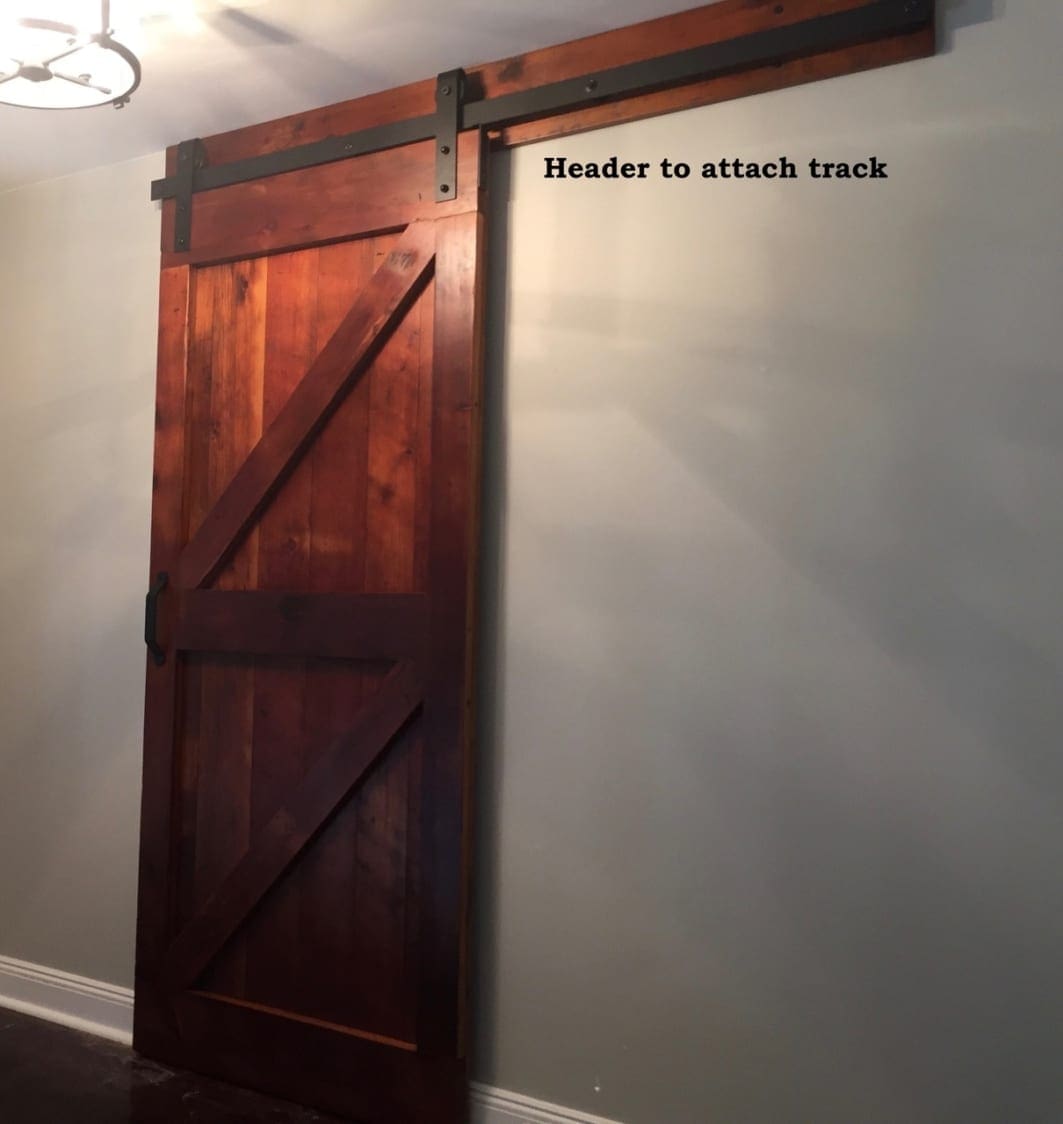
Is the door meant to be seen from both sides?
This is an important thing for us to know because if the barn door is simply going to be used to cover, for example, a closet, then it’s only going to be viewed from one side. This means no recessed handle is necessary for the backside of the door. A barn door covering a mud room, however, will regularly be used from both sides and thus requires a Pull on the front side and recessed pull on the back side.

Do you need a door that fully closes?
When thinking about a barn door it’s important to remember that a traditional swing door closes flush within its opening. A barn door, on the other hand, slides across an opening while also floating along the wall.
This means if you really want a door that affords complete privacy for that entranceway then a barn door isn’t a good choice for it. This is especially important to keep in mind when thinking about what type of door to use for a bathroom. A sliding barn door wouldn’t offer the same level of privacy that a locking swing door would in this case.
Many of the rustic barn doors we’ve build out of old barn wood also feature tiny cracks that may allow a bit of light to pass through (or little children’s eyes to see through). Such things definitely need to be considered, depending upon what type of opening you’re thinking about covering up with an interior barn door.
Can You Choose the Hardware for Your Barn Door?
Yes, of course! As we move forward together to complete the exact details relating to your custom barn door order I’ll send you a link to our hardware supplier.
We’ve used this supplier for many years and their metals not only look terrific but are very high-quality in terms of performance. You’ll love how the wheels move along the tracks, for example. And our supplier also offers a great number of styles and finishes to choose from.
When it comes to using metal, one of our goals is to create a look where the metal chosen for the hardware integrates seamlessly with the particular wood used to build the door. On occasion, we also work with metal craftsman to wrap the ends of wooden pieces in metals such as copper and zinc. We could certainly do this with any of our hand-crafted barn doors.
When it comes to finally installing the hardware on your barn door, we can certainly do that for you, if you wish. And most of our customers also hire a contractor to install the overhead sliding door track.

Thinking about a hand-crafted barn door for your home?
We’re here to help. You can begin by sending us a picture of the opening you’re thinking about covering with a sliding barn door. That will help us see what the best options are for your situation.
All barn doors are made-to-order. We don’t keep any in stock (although we do have a few samples in our showroom for you to see).
Contact us for more information. If you have any further questions about hand-crafted interior barn doors for your home then we’d love hearing from you.


